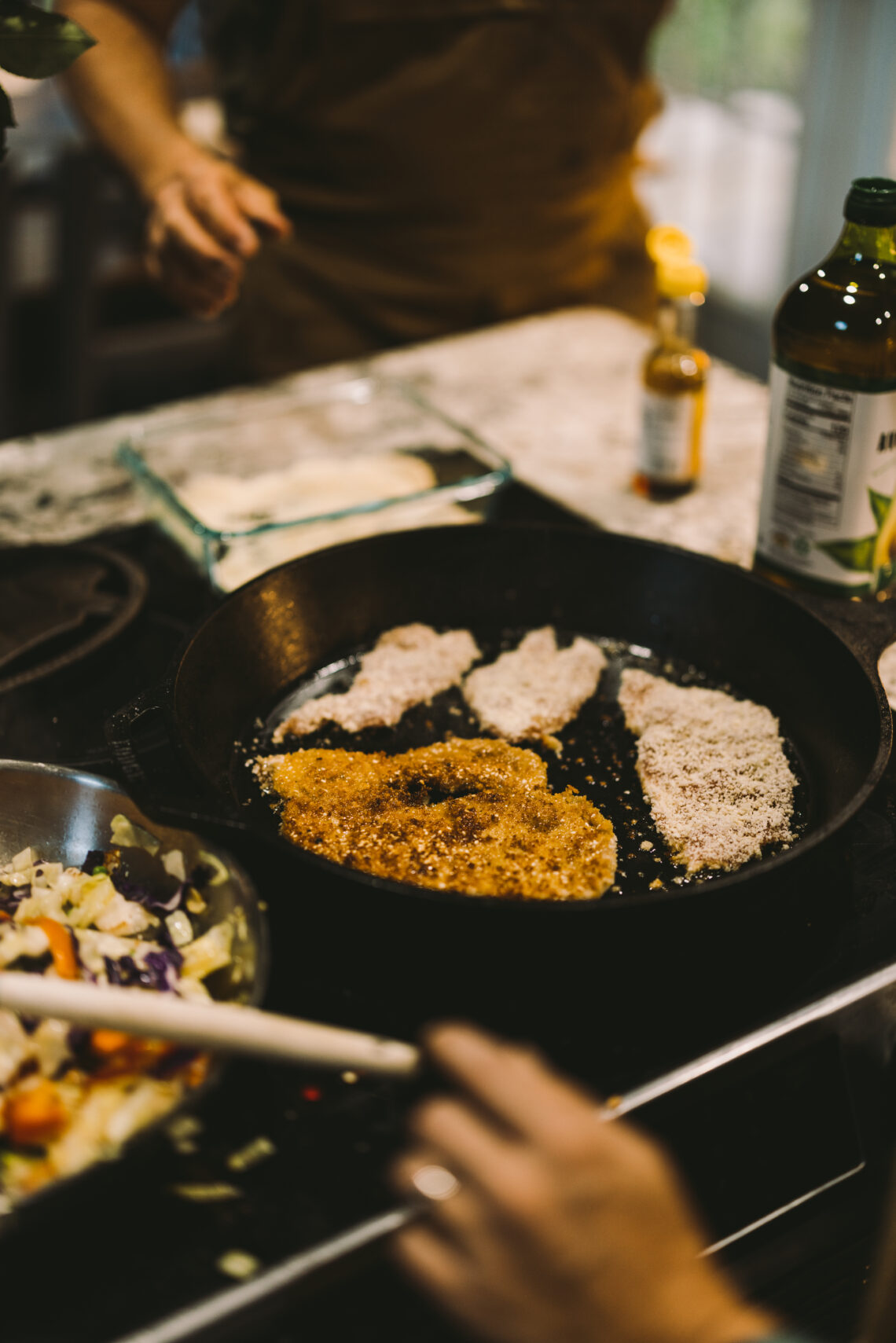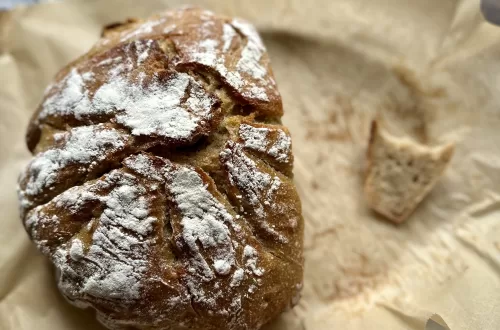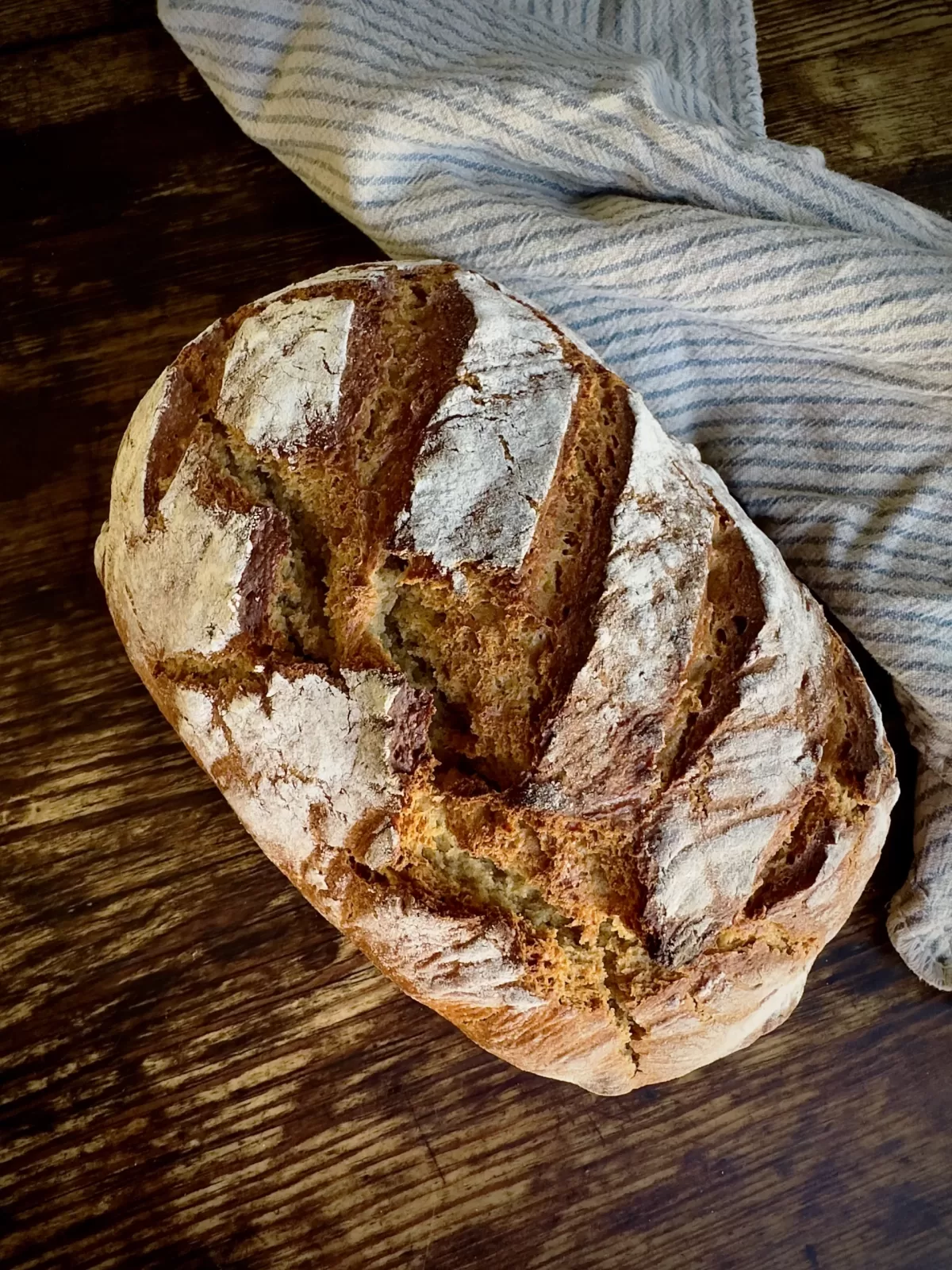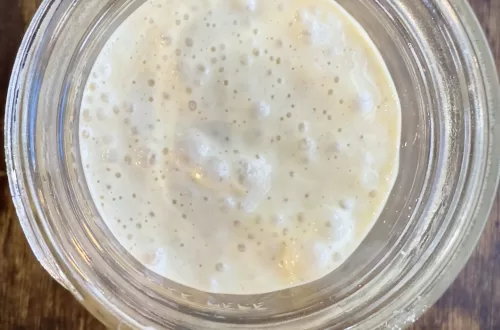Some meat is best served fried. It’s as simple as that. Several recipes on this website call for meat to be dredged and either deep- or shallow-fried. I wouldn’t recommend you eat deep-fried meat every night as it introduces a lot of saturated fat. If you fry in some types of oil, it introduces trans fats. These are the bad guys. Avoid them altogether.
But if done right, there are healthier ways to fry food. There are also tastier ways to fry food. The two are not mutually exclusive. Here’s my short list on how to fry food in the healthiest, tastiest way possible.
Beat it!
One thing I learned from Clay is the power of a good meat mallet. Beating meat helps tenderize it and smooths it out for even cooking. If you’re using wild game it’s especially helpful to beat it thoroughly. Once you think you’ve done enough, beat it a little more, but don’t beat it so much it comes apart.
Dry it
Pat the meat completely dry with a tea towel or paper towel before dredging it. Don’t scrimp on this. It helps keep the breading in place. This simple step makes a huge difference in the final product.
Take every opportunity to add flavor
There are four major opportunities to add flavor to fried meat.
- Use a brine. Northwest Arkansas is home to the world’s largest and (potentially only) Squirrel Cookoff. It was there I learned that a pickle juice brine is the secret to an incredible fried sandwich-whether it’s from Chik-Fil-A or the squirrel cookoff. We soak wild turkey cutlets in it.
- Add spices to your flour. The first step in breading turkey is dredging it in flour. Add spices to that flour. We use a lot of cajun seasoning around here for basic fried turkey or chicken. I added ground ginger and garlic to the flour for our Wild Turkey Asian Rice bowls.
- Add flavor to the eggs. You need to add a little liquid to the eggs that make up your egg wash. Most recipes call for water. But you can also use vinegar, lemon juice, brine, soy sauce, or anything else that complements your meal.
- Add spice or texture to your coating. The last step in breading your meat before frying it is coating it. Some people just add more of their flour mixture. But you can do better than that. I love panko crumbs and sesame seeds for an Asian flavor. I’ve seen people use nuts chopped in a food processor for breading. Southern women love to use cornflakes or ritz crackers.
Mind the Fat
There seems to be no end to the debate on whether and what kind of fat is good for you. I’ve read a lot of good arguments. Here’s where we have landed as a family.
When it comes to eating healthy, I think some decisions are more important than others. I prioritize healthy fat and proteins above everything else. There are a lot of good oils out there that offer health benefits. But when exposed to high heat for a long period of time, some oils get damaged and release harmful compounds. Since we know oil used for frying will be exposed to high heat, we use an oil or fat with a high smoke point that is oxidatively stable. For that reason, we avoid frying in most seed oil.
Animal fats (like butter and bear grease) are your best bet for stability. Coconut oil, avocado oil and many even say olive oil are also stable fats. However, with the exception of avocado oil and olive oil, most of these—including animal fat–are high in saturated fat which can lead to inflammation. That’s why we avoid deep-fried food every night even though we cook it in high-quality, stable fat.
When we fry food we use butter, high-quality animal fat, or avocado oil. We occasionally use peanut oil or olive oil. Coconut oil tastes like the Whole 30 to my kids and that little experiment didn’t go over well here at The Newcomb Farm. So we avoid it now.
Cooking Techniques
We optimize our cooking techniques to reduce the amount of saturated fat we consume. You can “shallow fry” meat. It works just like it sounds. Instead of immersing your meat in hot oil, use just enough oil to fry the periphery and let the heat cook it all the way through. Unless my meat is pounded very thin, I find shallow-frying leads to uneven cooking and burning. I might have a greater tendency to burn food than most people do. So I avoid that.
One thing I have done successfully is essentially “sear” our fried meat in a small amount of oil and then place it in the oven to heat it through. We use less oil this way. Heating high-quality oil to 350-375 degrees also helps get your meat in and out and causes your meat to absorb less fat.






Great article!!! 👍
Thank you Alicia!